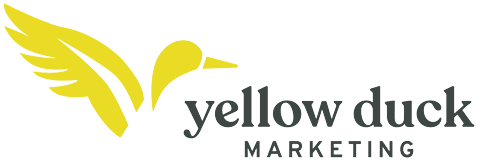It’s no secret that we are a plugged-in society. Our connection to technology is our comfort blanket. Needless to say, we don’t respond well when a favorite social media platform changes, which led to social media fanatics tweeting their extreme dislike of the new Twitter “like” option last week.
Here’s what happened:
Twitter changed the star icon “favorite” to a heart icon “like” and Twitter users practically lost their minds.
The Twitter blog explained the change as an effort to make Twitter easier to use by newcomers. Twitter also went on to explain that a heart was understood across different languages, could convey a range of emotions and claimed that “in our tests, we found that people loved it.”
Well Twitter, we think your test results may have been inaccurate.
Why Twitter fans are upset:
- They don’t like change
- Hipster Twitter fans don’t want to be like Facebook
- It doesn’t add an additional function
- The “like” option doesn’t increase Twitter’s usability (regardless of what Twitter may think)
- Users have requested useful changes, such as the ability to edit tweets, and Twitter bypassed that for a heart – no pun intended
In changing the action from a “favorite” to a “like,” it appears that Twitter is actually trying to blur the lines by using the same language as Facebook. Nowadays with third-party apps that will cross-platform post for you, the lines between social media platforms have become harder and harder to see. From a marketing standpoint, cross-posting or syndicating from one platform to another is one of the worst things you can do for your business.
As a business, it’s important to know that social media platforms are different and how to utilize each platform to your advantage.
Facebook is unchallenged in regards to user numbers. As a business this is where you can network to a bigger audience, especially when implementing page promotion and boosting posts. Although it’s not suggested, you can post lengthier content on Facebook without the character restriction. Facebook’s audience has slowly been gaining an older demographic of 50+ and losing some ground with the younger generation of millennials. Knowing your target audience and what platform they spend their time on will do more for you as a brand or company.
On the other hand, demographics show that the Twitter audience between the ages of 18-29 is growing. Millennials are used to receiving bite-sized pieces of information as soon as it breaks. If that’s your audience, Twitter may be the better option. Also, data shows that 49% of monthly Twitter users follow brands or companies, compared to an average of 16% across all other networks. City residents are more prone to use Twitter than a user in a more rural setting.
If you supply a service, you’ll probably do better on Facebook or Twitter vs. Instagram. For example, it’s hard to visually show why you should choose one accounting firm over another. However, if you’re supplying a tangible product that can be shown in different stages of production and completion or it’s highly visual, Instagram is a perfect fit. Instagram also has a much younger user base – the majority of Instagram users are under 30 and many are in their teens. Remember also that Facebook content appears in users’ feeds based on an algorithm, meaning you may have to boost a post for it to be seen by your audience. Using Instagram doesn’t automatically result in a higher engagement rate, but you don’t have to boost content for it to be seen.
Social media success comes from knowing who your target audience is and what they are looking for from you as a company. Don’t get a Facebook page just because your competitor has a Facebook page. You aren’t your competitor, just like Twitter isn’t Facebook. Learn from Twitter, make sure you listen to what your audience wants from you before implementing something new.
Got it? Or not so much?
If all of this sounds a little overwhelming and a bit confusing, no worries. The ducks are fluent in the language of social media, and we can help you establish a social media strategy that is right for your business. One size does not fit all. At Yellow Duck we are big on customization and we build an individualized strategy for every client that walks through our door. Give us a quack – we would love to sit down with you and discuss your social media goals.








